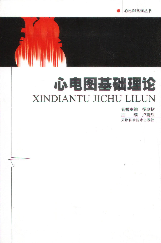
主要责任者: 卢喜烈;孟凡华,周军荣,石亚君等
责任方式: 主编;副主编
出版者: 天津科学技术出版社
出版地: 天津
字数: 576 千字
页码: 1-369
开本: 16
中图分类号: R540.4
装帧: 精
语种:中
定价:49.00
出版时间:2005-04
丛书多卷书否:是
丛书名:心电图系列丛书
书目简介:本册工具书是心电图系列丛书之一,共收录115条词条。
被引频次:80
- 《毛泽东选集》第五卷名词词语解释
- 《毛泽东选集》第五卷成语典故简释
- 《毛泽东选集》第五卷民族问题成语典故简释
- 《毛泽东选集》第五卷词语简释
- 《毛泽东选集》第五卷词语解释
- 《毛泽东选集》词语典故手册
- 《毛泽东选集》(第二版)
- 《民俗》周刊
- 《水动力学,关于流体中力和运动的说明》
- 《水土钢筋混凝土设计规范》(sdj20——78)
- 《水浒传》妙语
- 《永别了,武器》
- 《永定风规》碑
- 《永州八记》景区遗址
- 《汉书·地理志》
- 《汉书·沟洫志》
- 《汉书·艺文志》
- 《汉书·食货志》
- 《汉书》与文学
- 《汉语主题词表》标引手册
- 《汉赋——扬雄赋作研究》
- 《汉赋中的山水景物——中国山水诗探源之三》
- 《汉赋和诗文的关系——赋体属性之考辨》
- 《汉赋:唯美文学之潮》
- 《汗简》注释